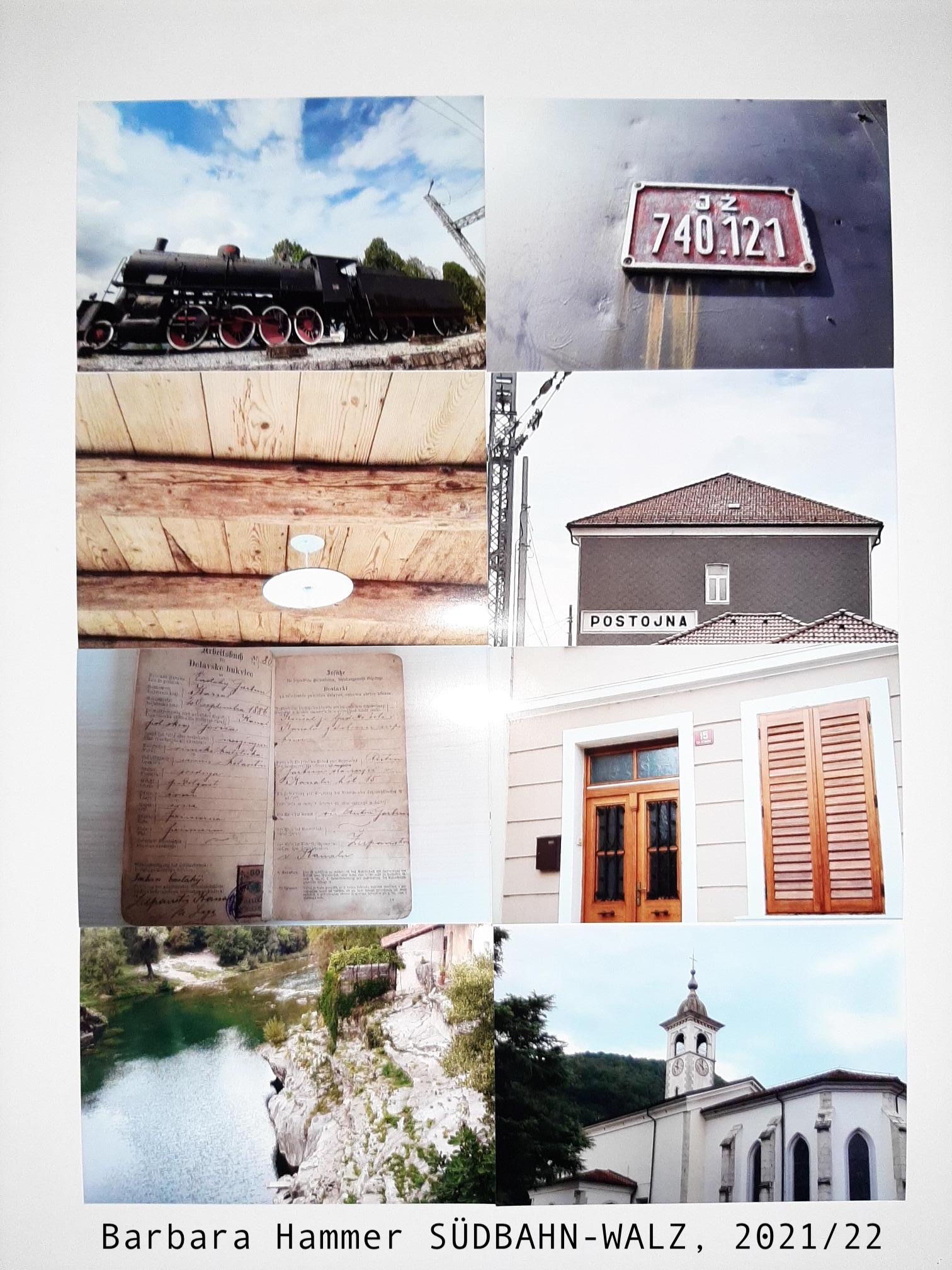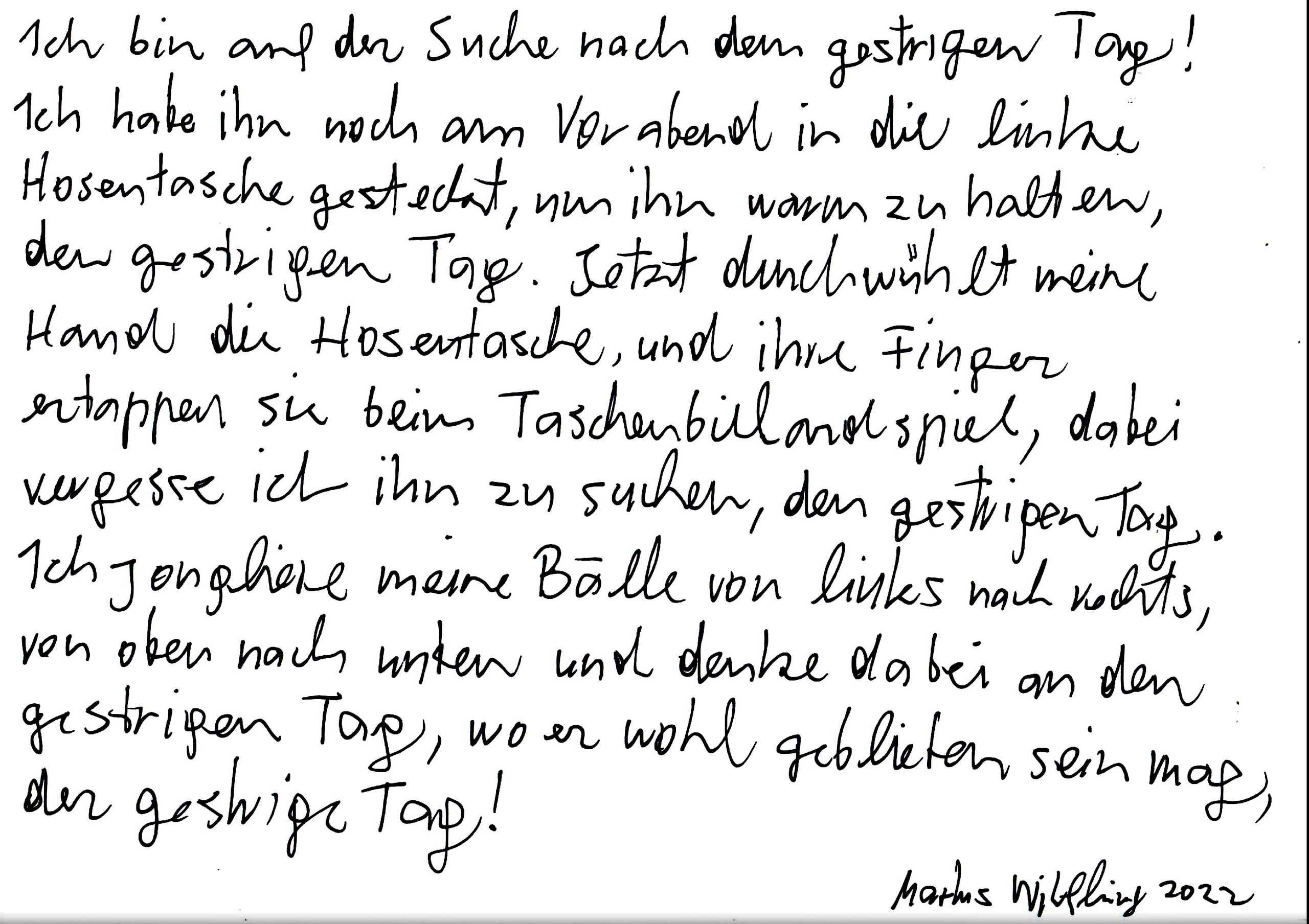Barbara Hammer, Aus der Serie SĂśDBAHN, Holzschnitt/woodcut 2022
Works by Barbara Hammer, Markus Wilfling  in the kunstGarten and works by Lore Heuermann & Cy Twombly in the Street Gallery.
Curator: Irmi Horn
The exhibition will be opened by the Town Councillor Dr. Günter Riegler and art historian Elisabeth Zuparic, BA.
Musik: Duo Flauto Cello Dagmar H. Steinbäcker (Blockflöte), Georg Mähring (Cello)
Someone can be in search of something lost, but also in search of something to be discovered.
Some people will find the search tiresome and exhausting, others exciting, challenging and exhilarating.
How people find their way in life can be determined by the socio-political structures of their origins.
Around 1900, many people were still on the journey ( Tippelei, Gesellenwanderung). From the 16th century onwards, wandering was even a duty for many journeymen.
So wandering was a prerequisite for becoming a master craftsman.
In this country, we enjoy a democratic constitutional state and many are offered the opportunity to seek & find. Artists take different approaches.
Barbara Hammer has embarked on a search for traces in the past and relates past reality to the current reality of travel. Travelling as a search for knowledge, experience, work and longing for faraway places in previous centuries is often in stark contrast to today’s journeys: Pleasure, relaxation, pleasure gain or business expansion.
But there are others: Those from war zones, areas of tyranny and drought struggling for bare survival: immigrants in search of a decent home.
She shows a series of woodcuts SĂśDBAHN:
A rolling book from the time of the monarchy inspired me to create the woodcut series
SOUTHWAY. The search for work led Evstahij Garbun, born in 1886 in the village of Kanal
in the Isonzo Valley (today Kanal ob SoÄŤi in Slovenia) to Trieste and then out into the wide world of the
the wide world of the monarchy, until he finally spent his retirement in Styria.

Walzbuch (© courtesy of Barbara Hammer)

Barbara Hammer SĂśDBAHN-WALZ, 2021/22
Since the 19th century, travel routes in the opposite direction have brought Austrians to their place of longing, Trieste, via the southern railway. And so the
the search for traces also led me from Graz via Vienna, Bruck a.M., Maribor, Lubljana
and Postojna to Trieste by the sea.
The series of woodcuts refers to this search for traces, poses the question “is the way the goal?
the goal” and reflects the search for a destination on the long journey. The abstract design of the prints refers to this mostly mountainous route, which is linked to the history of the
the history of the Austrians and their longing for the sea.
Barbara Hammer was born in Graz, where she still lives and works as an artist.
She has been intensively involved in painting and printmaking since 1986 and has constantly sought further training, for example in Berlin and Dresden in the context of summer academies as well as in the Dresden Graphic Workshop (Technical Collection).
In her art, Barbara Hammer deals intensively with contemporary events and takes a stand on threats and injustice. The deficits in dealing with human rights are currently the focus of her works. Her most recent etchings are contemporary socio-political statements.
She has already presented her works in numerous exhibitions at home and abroad.
She is a member of the Professional Association of Fine Artists of Austria and the International Association of Woodcutters XYLON, Section Austria.
Markus Wilfling will create something special.

Markus Wilfling GEDICHT/Poem, 2022
Wilfling, who studied with Bruno Gironcoli at the Academy of Fine Arts, is an extremely distinguished Austrian artist in playing on specific places or spaces. He transforms everyday objects and materials into often monumental art objects and installations and develops his very own formal language in sculpture .Markus Wilfling (1966, Innbruck, Austria) is a sculptor and teaches at the Ortweinschule Graz. Numerous exhibitions since have established him as an important Austrian artist. He lives and works in Styria.
Lore Heuermann (- the power woman turns 85 this year) & Cy Twombly are united by a kind of scriptural painting that points out that much in this world has not yet been grasped: They create signs in delicacy and sweeping gestures, with which they construct aesthetic typefaces whose gestures, mysteriously expansive, allow emotional experiences of searching and finding.

Lore Heuermann BODIES, Japanische Tusche auf NepalbĂĽtten 2016
Born in Münster, Lore Heuermann came to Vienna in 1956. In 1957/58 she studied at the Academy of Fine Arts in Vienna and in 1958 at the Académie de la Grande Chaumière in Paris. In the 1960s she made study trips to Greece, Turkey, Syria, Jordan, Lebanon and Egypt, and in 1978 to Sicily and Lampedusa in Italy. Since the early 1980s she has travelled to countries on almost every continent, including a work and study stay with Harvey Littleton (see studio glass movement) in North Carolina (USA) in 1984 and a six-month scholarship in Fujino (Japan) in 1997/98, as well as on the occasion of exhibitions and performances.
She is a member of the Grazer Autorinnen Autorenversammlung (GAV)] and since 2000 of the IG Bildende Kunst in Vienna. In 2005, she was curator of the exhibition Frauen machen Druck at the Galerie im Sitzungssaal in Vienna.
Lore Heuermann was married to the writer and former Berlin innkeeper Oswald Wiener (1935-2021), from whom she has been divorced since 1964. Together they have two daughters and a son, including the television chef and entrepreneur Sarah Wiener (* 1962). Heuermann is living and working in Vienna since the 1950s.
Edwin Parker “Cy” Twombly, Jr. (April 25, 1928 – July 5, 2011) was an American artist.  He used the nickname “Cy”, after his father and the star baseball pitcher Cy Young.
Twombly was known for his large-scale, freely scribbled, calligraphic-style graffiti paintings, on solid fields of mostly gray, tan, or off-white colors. He exhibited his paintings worldwide. Twombly’s paintings blur the line between drawing and painting. Many of his best-known paintings of the late 1960s are reminiscent of a school blackboard on which someone has practiced cursive “e”s. Twombly had at this point discarded painting figurative, representational subject-matter, citing the line or smudge – each mark with its own history – as its proper subject.
Later, many of his paintings and works on paper moved into “romantic symbolism”, and their titles can be interpreted visually through shapes and forms and words. Twombly often quoted the poet StĂ©phane MallarmĂ©, as well as many classical myths and allegories in his works. Examples of this are his Apollo and The Artist and a series of eight drawings consisting solely of inscriptions of the word “VIRGIL”. In a 1994 retrospective, curator Kirk Varnedoe described Twombly’s work as “influential among artists, discomfiting to many critics and truculently difficult not just for a broad public, but for sophisticated initiates of postwar art as well”.  After acquiring Twombly’s Three Studies from the Temeraire (1998–99), the Director of the Art Gallery of New South Wales said “sometimes people need a little bit of help in recognising a great work of art that might be a bit unfamiliar”.  He is said to have influenced younger artists such as Anselm Kiefer, Francesco Clemente, and Julian Schnabel.

Cy Twombly (1928-2011), Untitled, 2005. 128 x 194½ in (325.1 x 494 cm)

